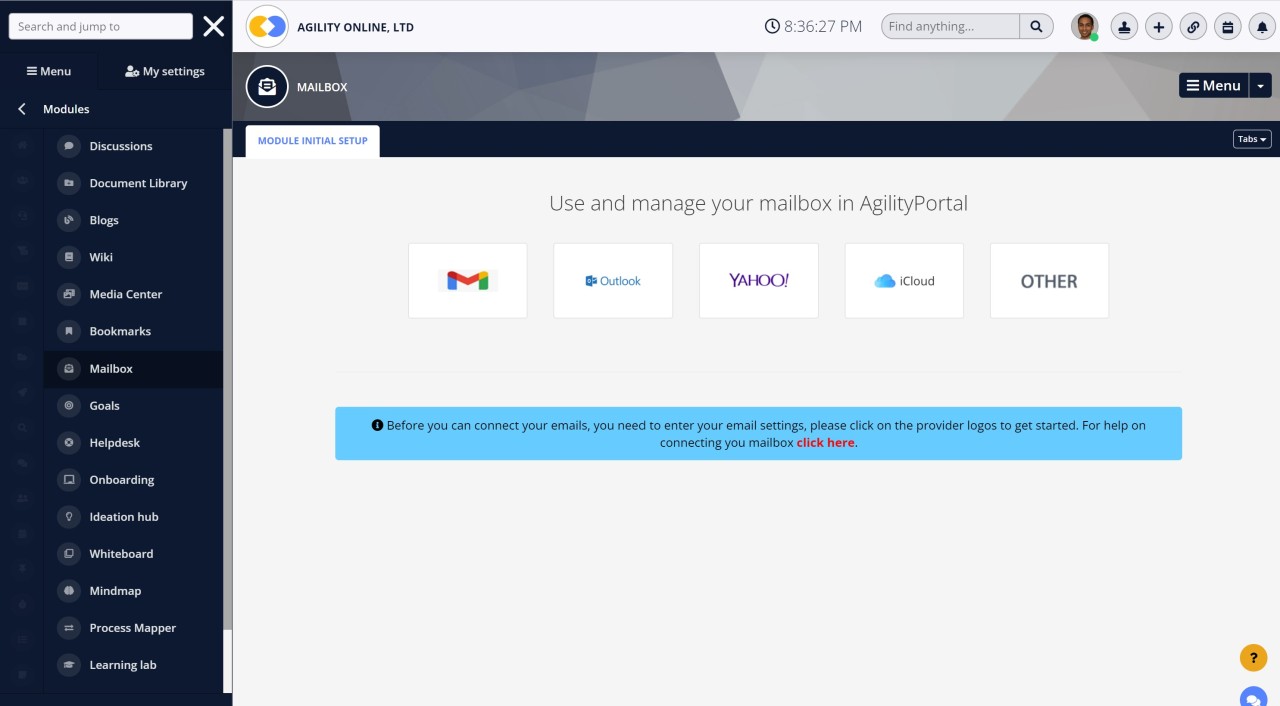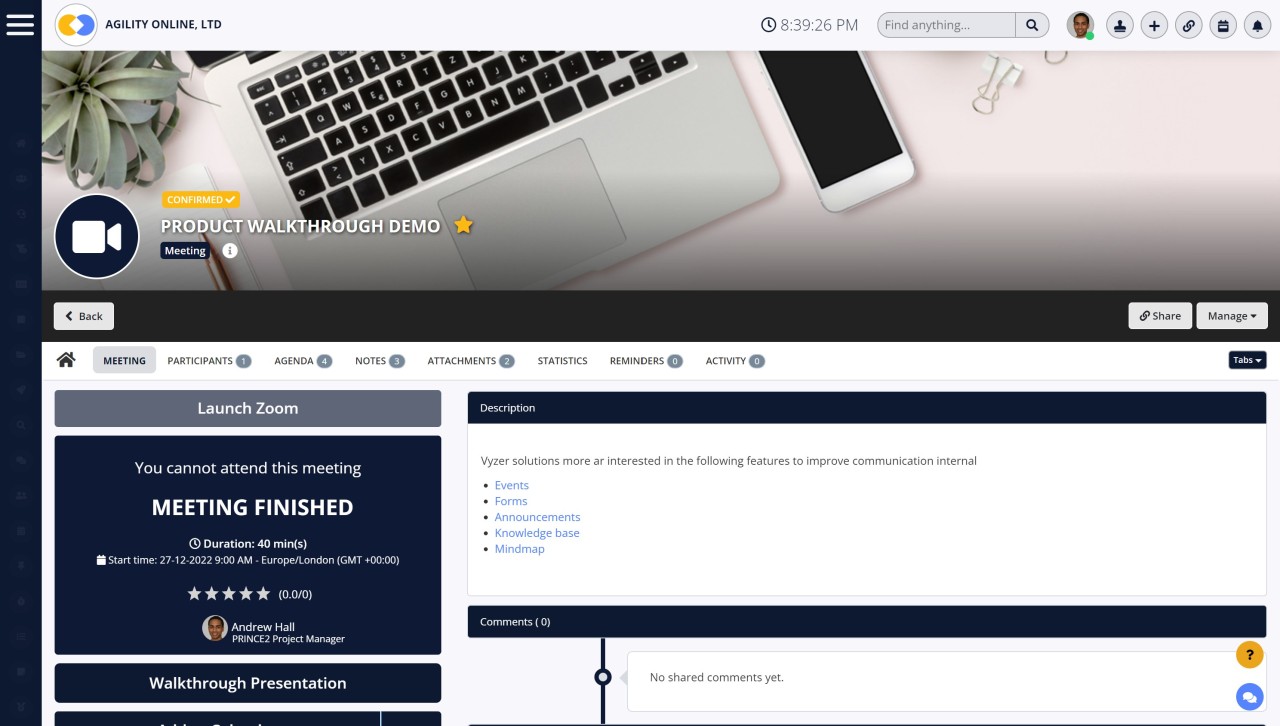Insight Blog
Agility’s perspectives on transforming the employee's experience throughout remote transformation using connected enterprise tools.
12 minutes reading time
(2330 words)
What is Employee communication UPDATED 2023 – A Complete Guide
Employee communication is the sharing of information, ideas, and feelings between employees and managers of an organisation.
Effective communication is essential for any business, and it is especially important for maintaining a productive and engaged workforce. However, many organizations need help with employee communication, leaving employees feeling disconnected and disengaged.
In this guide, we will explore the importance of employee communication and provide practical tips for improving communication within your organization.
So lets get down to what is employee communication, it is the act of connecting with staff members to ensure they are updated on important events within the organization. It helps foster feelings of community, accountability, and transparency among employees and their supervisors.
Effective employee communication should involve a variety of mediums such as face-to-face conversations, emails, bulletin boards, town hall style forums, newsletters, intranet pages and even non-traditional methods such as text messages or videos.
Open lines of communication are important for creating an environment in which employees feel supported, engaged and included in key decisions that affect the workplace.
Communication also enables employers to provide clarity on expectations and performance objectives - leading to more productive employees overall.
Why Employee Communication Matters in 2023
Effective employee communication is essential for building a strong and engaged workforce. When employees feel connected to their organization and understand their role within it, they are more likely to be productive and motivated. In contrast, when employees feel disconnected and disengaged, they are more likely to be demotivated and less productive.
Effective employee communication also helps to build trust between employees and management. When employees feel that they are being kept informed and that their opinions are valued, they are more likely to trust their leaders and be more committed to their organization.
It is vital to the success of any organization. Good internal communication helps build strong relationships, cultivate trust, and create a positive working environment. As such, here are five reasons why employee communication matters: Also it can foster collaboration in the workplace and make it easier for employees to work together on projects. As well as it can motivate employees by providing them with feedback and recognition for their hard work.
To reduce misunderstandings that can lead to errors and disagreements by clarifying expectations about roles and responsibilities, and it can bring clarity to job functions and clarify objectives or goals that need to be achieved as part of the job.
Additionally, effective communication can help to prevent misunderstandings and conflicts, leading to a more harmonious and productive workplace.
- Remote work: With the increased prevalence of remote work in the wake of the COVID-19 pandemic, effective communication has become even more important for maintaining a sense of connection and cohesion among remote teams.
- Adapting to change: In 2023, organizations will need to continue to adapt to the ever-changing business environment, which will require clear and consistent communication to ensure that employees understand and are able to support the organization's goals and objectives.
- Maintaining employee morale: The ongoing pandemic has resulted in increased stress and uncertainty, which can negatively impact employee morale. Clear and regular communication can help to mitigate these effects.
- Keeping employees informed: With the fast-paced nature of business today, it is critical to keep employees informed about changes, updates and new developments that may impact their work.
- Building a culture of transparency: The more transparent organizations are with their employees, the more trust and respect they can build. This can lead to a more engaged, motivated workforce, which is essential for organizations to be successful in the future.
It has been proven that employee communication can increase productivity by helping employees stay focused on tasks at hand and eliminating confusion or delays caused by lack of understanding.
In short, effective communication between employees is essential for a successful workplace culture in 2023.
Want to build your own internal communication platform under 1 hour: Click here for a demo
Communication Channels to gauge effective employee communication
One of the most important aspects of employee communication is selecting the right communication channels. The channels you choose will depend on your organization's size, culture, and resources, but there are a few key channels that are commonly used.
Email communication
The advantages to using email is its one of the most widely used communication channels in the workplace. It is a great way to share information and updates with employees, and it is easy to use and track.
It allows communication to happen quickly, efficiently, and cost-effectively, making it beneficial for businesses of all sizes. With emails, there is no need for expensive courier services or hard copies; instead, you can send an email with a click of a button and get an instant reply. Additionally, because emails allow messages to be instantly archived, managers can reference previous correspondence quickly and easily. Thus, email provides effective employee communication in multiple ways: speed, cost savings, ease of use, and easy archiving of conversation records.
However, it can be easy for emails to get lost in inboxes, so it's important to make sure that essential messages are highlighted and that employees are encouraged to check their email regularly.
Email might be an easy way to send messages quickly, but when it comes to employee communication, it can have its disadvantages. For one, emails can be hard to organize and track as there's no central repository for sifting quickly through past communications.
Additionally, employees may misinterpret the intent of an email without the benefit of non-verbal clues like body language or vocal inflections which could lead to confusion within the team.
Moreover, once sent, emails cannot be taken back so mistakes are not easily recoverable. As a result, it is important for companies to carefully consider using email for employee communication in order to avoid any misunderstandings.
Here are a few advantages:
- Email is a free tool
- Email is quick
- Email is simple
- Email allows for easy referencing
- Email is accessible from anywhere
- Email is paperless, and therefore, beneficial for the planet
It might be an easy way to send messages quickly, but when it comes to employee communication, it can have its disadvantages.
For one, emails can be hard to organize and track as there's no central repository for sifting quickly through past communications. Additionally, employees may misinterpret the intent of an email without the benefit of non-verbal clues like body language or vocal inflections which could lead to confusion within the team.
Moreover, once sent, emails cannot be taken back so mistakes are not easily recoverable.
Here are a few more disadvantages:
- Email could potentially cause information overload
- Email lacks a personal touch
- Email can be disruptive
- Email cannot be ignored for a long time
- Email can cause misunderstandings
- Email messages can contain viruses
As a result, it is important for companies to carefully consider using email for employee communication in order to avoid any misunderstandings.
Employee Intranet portal
An intranet is a private network that is only accessible to employees within an organization. It can be a great way to share information, resources, and updates and be used for collaboration and communication.
Intranets are becoming a popular way to facilitate employee communication. They can be used in many ways, such as to communicate announcements, or to share information quickly and easily with everyone in the company.
They can also provide access to private discussions and teams, allowing for increased collaboration and knowledge sharing between employees. Intranets can also be a great way to build morale and foster a sense of community among employees by providing opportunities for engagement through discussion boards, blogs, polls and surveys.
Ultimately, an intranet can make the task of employee communications easier and more efficient.
5 benefits of using an intranet
- Share information with your entire organization quickly and privately
- Make finding information easier and quick
- Improve collaboration and feedback internally
- Draw your employees in with compelling content
- Fostering a more transparent culture
Meetings and conferencing tools
Meetings can be a great way to share information and updates, and get feedback from employees. They can be held in person, or they can be held remotely using video conferencing tools.
Regular meetings between employees can be a great way to build team rapport and boost communication. Consistent interaction between co-workers helps create an environment of trust and encourages open dialogue on both professional and personal topics.
These meetings can also help cultivate collaboration, increase understanding of individual roles and responsibilities, and provide a safe space for sharing ideas or concerns.
Additionally, regular meetings provide an opportunity to discuss successes, identify challenges, and celebrate achievement together as a team.
When done correctly, regular meetings can be beneficial to the overall success of any organization.
Social media and employee communication platforms
Social media can be a great way to share information and updates with employees and be used for collaboration and communication. However, it's important to be mindful of the tone and content of your messages and to ensure that they are appropriate for a professional audience.
Social media has the power to revolutionize communication in the workplace. Not only can it improve collaboration between colleagues, but it can also facilitate effective communication between departments and promote transparency.
For example, setting up a dedicated forum for employees to share ideas or ask questions allows for an opportunity to create a more open dialogue between employers and employees.
Additionally, using social media networks like Facebook, Twitter, and Instagram can allow companies to reach new audiences as well as provide a platform for individuals to build their own personal brands.
By implementing innovative tools such as these into their business strategies, organizations have the potential to come across as more open and responsive, ultimately leading to better morale among their staff and opportunities for growth.
Two-Way Communication
Effective employee communication is not just about sharing information, it's also about listening and responding to employee feedback. Two-way communication is essential for building trust and engagement, and it is important to make sure that employees have multiple opportunities to provide feedback.
One way to encourage two-way communication is to hold regular town hall meetings where employees can ask questions and provide feedback. Another way is to create an employee suggestion box or an employee engagement survey.
Additionally, managers and leaders should be encouraged to be approachable and to make themselves available for one-on-one conversations with employees.
Transparency
Transparency is another important aspect of effective employee communication. When employees feel that they are being kept informed and that their opinions are valued, they are more likely to trust their leaders and be more committed to their organization.
One way to increase transparency is to hold regular town hall meetings where employees can ask questions and get updates on the organization's performance. Another way is to create an intranet or a company newsletter where employees can find information on the organization's performance, goals, and objectives.
Additionally, managers and leaders should be encouraged to be open and honest when communicating with employees.
Creating a Communication-Friendly Culture
Effective communication is essential for the success of any organization. It not only improves employee morale and productivity but also helps in building trust and fostering a positive work environment.
A communication-friendly culture is one where employees feel comfortable sharing their ideas, concerns, and feedback. In this article, we will discuss how to create a communication-friendly culture by focusing on the role of leadership, encouraging employee participation, and building a communication plan.
The role of leadership in fostering a culture of open communication
Leadership plays a crucial role in setting the tone for communication within an organization. A leader who models open and transparent communication encourages the same behavior in their team members.
They should be approachable, listen actively, and respond to employees' concerns in a timely manner. Additionally, they should be willing to admit when they do not have the answers and seek input from their team members.
By fostering an environment where employees feel comfortable sharing their thoughts and ideas, leaders create a culture of open communication.
Encouraging employee participation and engagement
Employee participation and engagement are vital components of a communication-friendly culture.
Encouraging employees to share their ideas and opinions helps to foster a sense of ownership and belonging. One way to do this is by creating regular opportunities for employees to provide feedback, such as through employee surveys or suggestion boxes.
Another way is to involve employees in decision-making processes that directly impact them. By giving employees a voice, organizations can tap into their collective knowledge and creativity.
Building a communication plan for the organization
A communication plan is a roadmap for how an organization will communicate with its employees, customers, and other stakeholders. A comprehensive communication plan includes goals, strategies, and tactics for each communication channel.
For example, a plan may include regular team meetings, weekly newsletters, and an employee intranet.
Additionally, it should outline the communication channels that will be used, how often they will be used, and who will be responsible for them. By having a communication plan in place, organizations can ensure that all employees are informed and engaged.
Wrapping up
In conclusion, effective employee communication is essential for building a strong and engaged workforce. It helps to build trust between employees and management, and it can prevent misunderstandings and conflicts.
The key to effective employee communication is to select the right communication channels, encourage two-way communication, and promote transparency.
By implementing these strategies, organizations can improve employee communication and create a more harmonious and productive workplace.
It's important to remember that communication is an ongoing process, and leaders and managers should continuously strive to improve and adapt their communication methods to best suit the organization and its employees.
Categories
Blog
(2596)
Business Management
(318)
Employee Engagement
(206)
Digital Transformation
(173)
Intranets
(119)
Growth
(118)
Remote Work
(61)
Sales
(48)
Collaboration
(37)
Culture
(29)
Project management
(29)
Customer Experience
(26)
Knowledge Management
(21)
Leadership
(20)
Comparisons
(5)
Ready to learn more? 👍
One platform to optimize, manage and track all of your teams. Your new digital workplace is a click away. 🚀
Free for 14 days, no credit card required.


















